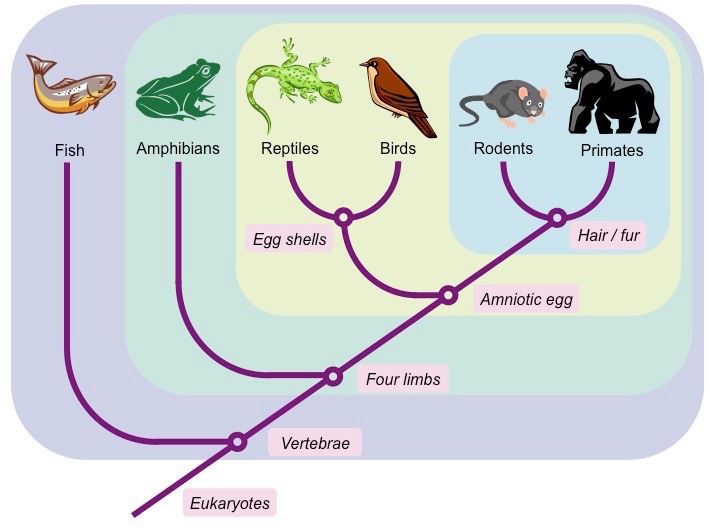What is the base-pairing rule? (Chargaff's Rule)
A=T and G=C
What trophic level does photosynthesis occur
producers
How many haploid cells do you get at the end of meiosis?
4
Which species are most closely related to reptiles
birds
What is an enzyme? Name a factor that can influence an enzyme.
Enzyme = proteins that speed up reactions (Enzyme Concentration, Substrate Concentration, Temperature, and pH)
What can you determine from a cladogram?
Evolutionary relationship between different species
What is natural selection?
Individuals have inherited characteristics that allow them to survive and reproduce more offspring
What are the three types of gene mutations?
Insertion, Deletion, and Substitution (point mutation, frameshift, and silent)
What trait do all species have in this cladogram
vertebrae